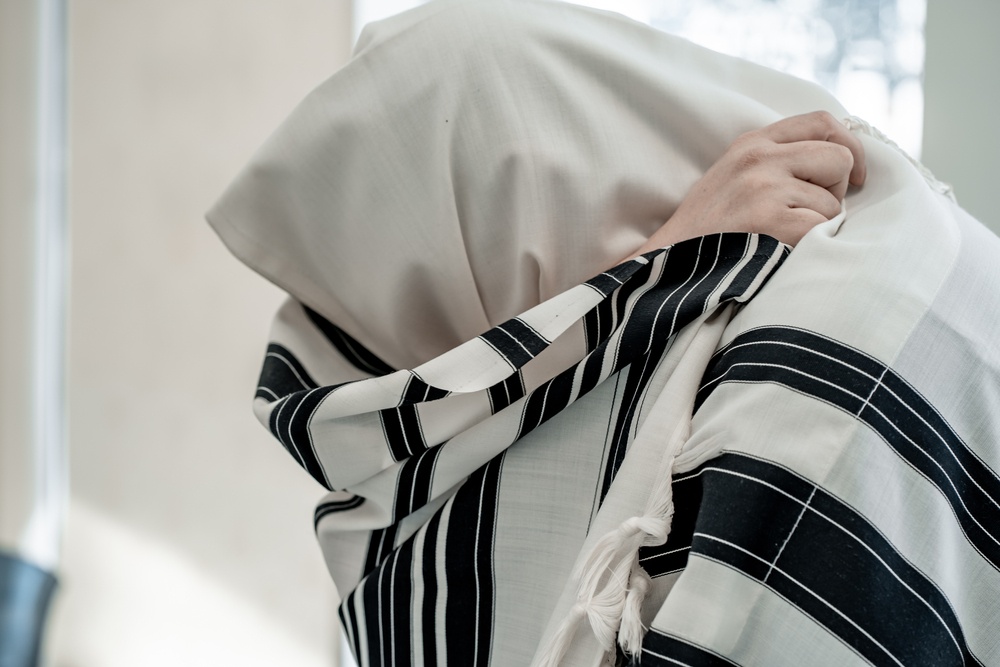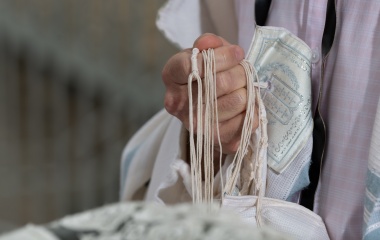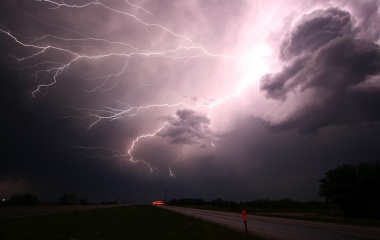
Tzizit and Mezuzah are two of the most popular and easy to fulfil mitzvot. Thankfully, even Jews who are very far removed from traditional practice tend to have a 'mezuzah' (whether it is kosher or not is a different story) on their front door (at least) proclaiming to all that they are proud Jews. Similarly, even though there is no obligation to wear tzizit unless one is wearing a four cornered garment, something that went out style years, if not centuries, ago the Jewish people across the religious spectrum specifically buy a four-cornered garment in order that they may attach the tzizit - fringes containing a thread of techelet, azure blue - and literally wrap themselves in a mitzvah.
Yet our Sages posit that it was specifically these two mitzvot that Korach ridiculed, arguing that they could be “replaced” with a house full of books, or with a garment that was made fully of techelet, but had no fringes attached. Why would Korach in his attempt to discredit Moshe Rabbeinu pick on these two beloved mitzvoth? Why not mount an attack on those incompressible chukim like shatnez, parah adumah or even what once was a favourite mitzvah to discredit, kashrut. Most Jews actually like the mitzvot of Tallit and Mezuzah - yet Korach specifically attacked them!
Korach seems to have foreshadowed a claim that would become prevalent at the beginning of the emancipation. Be a Jew at home but a man on the street. Korach was willing to have a home full of books. He may even have studied them. But that was in the privacy of his home when no one was looking. But outside one was to hide their Judaism. Many understandably yet unfortunately abandoned the mezuzah, containing the shema and its declaration that we should "speak of them when you are at home, when travelling on the road" (Devarim 6:7). It is no accident that putting a sign on our doorposts is the marker that distinguished Jewish and Egyptian homes on the night of redemption from captivity. Did Korach not see the irony in attacking that which saved him, a firstborn no less?
Apparently, Korach was afraid his followers would see this argument for what it is worth so he devised another plan of attack. Tzizit. He asked Moshe if a garment that is made of 100% techelet needs tzizit. When Moshe answered in the affirmative Korach mockingly laughed replying that if one string of techelet is enough to fulfil the mitzva surely an entire garment of techelet would not need an extra techelet fringe.
Tzizit is meant to ensure that we "do not stray after your heart and eyes which lead to immorality" (Bamidbar 15:39). As Rashi points out "the eyes see, the heart desires and the body commits sin[1]". Korach was not willing to accept limits. We see, we like, and we do. The blue of the tzizit is meant to remind us to pursuing spiritual goals is more important than the pursuit of material blessings. While the latter are part of G-d’s blessing to man, they gain a higher purpose if used as a steppingstone to growth in spirituality. Freed from many of the daily concerns that take up so much energy and efforts of those not so blessed enables us to grow spiritually[2].
To Korach the material and spiritual worlds were separate. There is the world of religion, represented by techelet, and then there is the material world represented by the while of tzizit. Korach was willing to wear a big blue garment as long as the tzizit remained all white. The material and spiritual worlds had to remain separate. However tzizit must combine the blue and the white. They must hang together as the material makes the spiritual possible and the spiritual makes the material meaningful.
Our generation has been blessed with the rediscovery of techelet, allowing the full observance of this mitzva for the first time in some 1,500 years. Not coincidentally our generation has been blessed with the establishment of the State of Israel where the material and spiritual join together to implement the vision of the Torah[3].
Mezuzah and tzizit are the twin pillars of religious growth. We must first and foremost be proud Jews wherever we may find ourselves. We must then ensure that our Judaism integrates all aspects of creation as we constantly strive to reach the seat of glory of G-d Himself.
[1] This was the “original sin” in the garden of Eden. “The woman saw that the tree was good for eating and a delight to the eyes, and that the tree was desirable as a source of wisdom, she took off its fruit and ate” (Breisheet 3:6).
[2] With every blessing having the potential to be misused there is always the danger that material blessing lead to diminished spirituality.
[3] Interestingly our Sages equate both the mitzva of tzizit and dwelling in Israel with all other mitzvot linking tzizit and dwelling in Israel.



